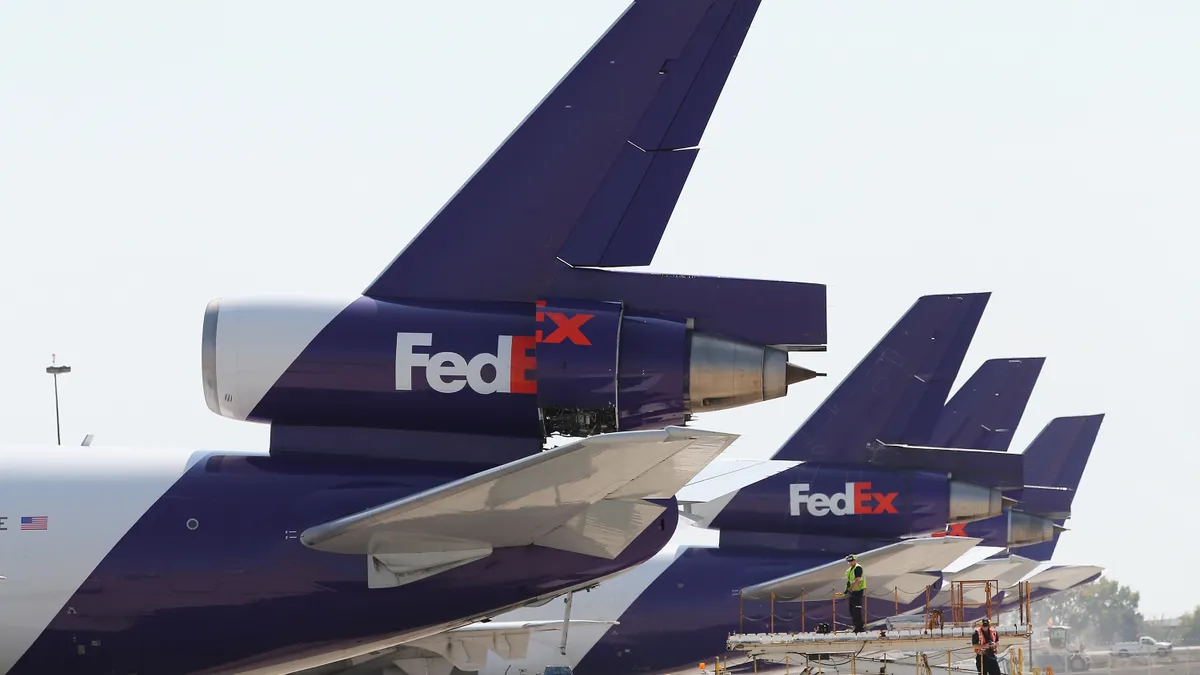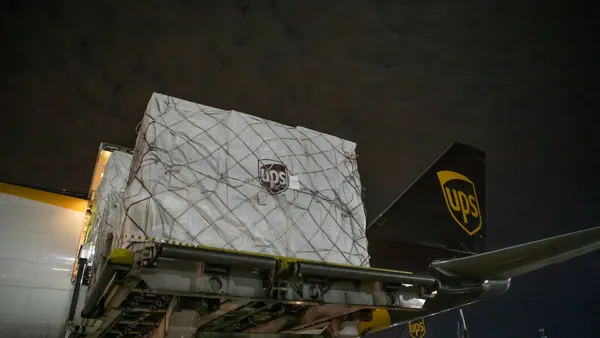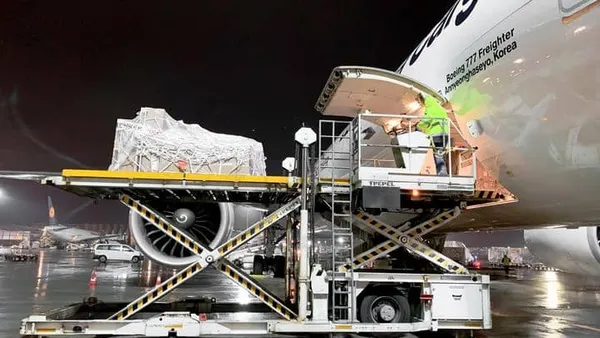FedEx made additional cuts to its Express unit last quarter as the company continues to right-size its fleet amid stagnant demand.
Last quarter, FedEx implemented a variety of cost-cutting measures, including reducing flight hours by 8%, chopping salary and benefit expenses by 4%, grounding nine aircraft and downgauging on select routes, CEO Raj Subramaniam told analysts during a March 16 earnings call. As a result of these steps, the company mitigated 45% of total revenue declines.
The CEO noted that the company’s Express network is “vast and complex, and requires time to adjust to changing demand conditions.” In turn, FedEx is phasing out its MD-11 aircraft as the company reconfigures its air network in favor of a more modern, agile and flexible fleet.
“Our aircraft modernization program and use of 777s and 767s affords us the ability to flex our plans,” Subramaniam said. “As we operate more collaboratively, we are leaning [onto] ground transportation more, requiring less CapEx while enabling us to reconfigure our network more quickly.”
FedEx has 58 MD-11s in its fleet as of Feb. 28, with two scheduled lease expirations in 2023, three in 2024 and two in 2025, according to the company’s Q3 statistical book. Meanwhile, FedEx currently has commitments to purchase 27 767F aircraft and six 777Fs.
Subramaniam further noted that FedEx intends to park an additional six aircraft during the fourth quarter.
“The MD-11 was that flex fleet, and as we now look at the demand environment, we don’t see that high demand coming through,” the CEO told analysts.
Express took the brunt of softening demand last quarter as it saw the sharpest revenue drop. In Q3, operating income for FedEx’s Express segment fell 77% YoY to $119 million, according to the company’s 10-Q form.
Air cargo volumes across the industry have dropped as shippers opt for cheaper modes of transport amid a normalizing ocean shipping environment and inflationary pressures. In turn, FedEx has been restructuring its air network to respond to the flatter market and generate long-term savings.
The changes include leaning on third-party providers to move less urgent shipments while FedEx’s fleet focuses on transporting priority volumes.














